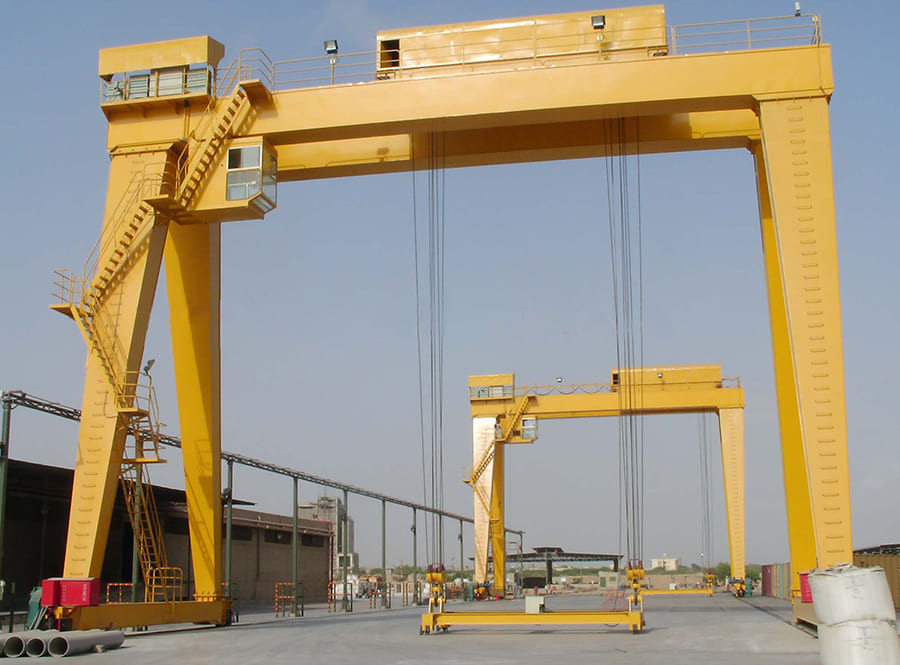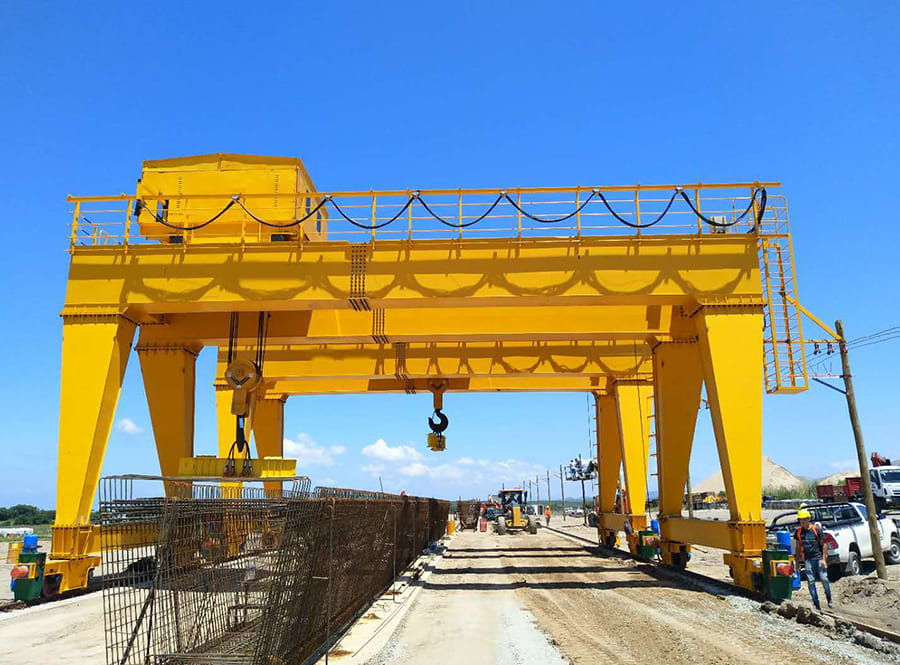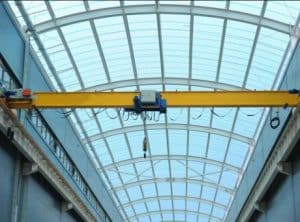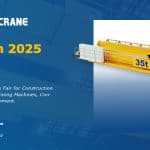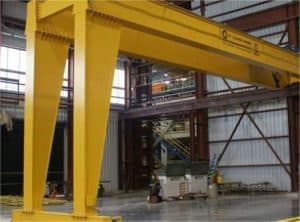Gantry crane, also called automated rail mounted gantry crane, is a variant of bridge crane. The appearance structure of the gantry crane is more like a door frame. A mobile device can be installed under the main beam to walk directly on the track on the ground. Due to its high site utilization, large working range and certain mobility, gantry cranes are widely used in cargo yards, large terminals, ports and other places.
According to the “Special Equipment Catalog” promulgated by the General Administration of Quality Supervision, Inspection and Quarantine, operators of bridge sevencrane automated rail mounted gantry crane wholesale and gantry cranes must understand the structure, working principle, technical performance, safe operating procedures, maintenance and repairs of the hoisting machinery used before taking up their duties. Learn and master relevant knowledge such as systems and relevant national laws, regulations, and standards. Only after passing school training and examinations to obtain theoretical knowledge and practical operation skills, and after passing the “Special Equipment Operator Certificate” issued by the Quality Supervision Bureau, can you start working.Top choice for industrial automated rail mounted gantry crane driver operating licenses are now uniformly issued by the “Market Supervision Administration” (former Quality Supervision Bureau). It is valid for 4 years and will be reviewed every 4 years.
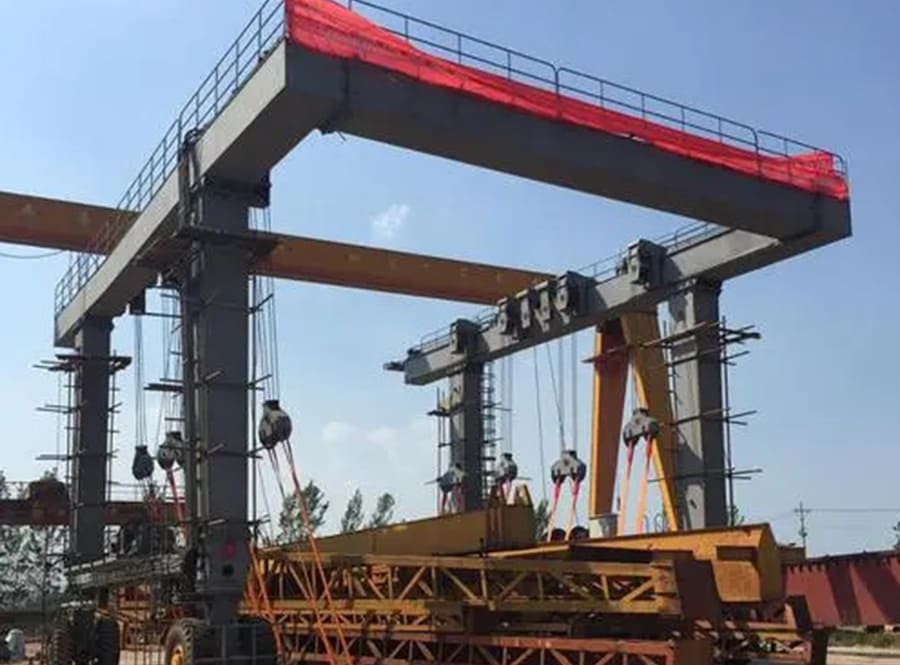
Gantry crane repair and maintenance:
1. The maintenance crane should be parked in a safe place, cut off the power supply, and put up warning signs or lock it. Safety warning lines should be set up on the ground and “No Passage” signs should be hung. Only specialized personnel are allowed to perform maintenance work on cranes. Personnel without operating qualifications and non-Public Works Support Department maintenance personnel are strictly prohibited from performing electrical, mechanical and other maintenance work.
2. When the equipment is being repaired, the operator should be present and cooperate with the maintenance personnel in commissioning and other work.
3. When operators and maintenance personnel add and replace lubricating oil, or when applying paint, they must take isolation and protective measures such as laying plastic sheets under the parts where leakage may occur to prevent oil and paint from directly spilling to the ground and polluting the environment. After the corresponding work is completed, waste oil, waste paint and plastic sheeting should be collected and placed in hazardous solid waste bins or hazardous solid waste yards. Littering is strictly prohibited.
4. Operators should regularly lubricate wire ropes, wheel bearings and other parts. The oil required for lubrication is collected from the spare parts warehouse of the Public Works Support Department by each engineering department.
Emergency measures for CE approved automated rail mounted gantry crane for sale:
1. If the crane fails during operation, the operation should be stopped immediately, and the “Equipment Failure Repair Application Form” should be filled in and reported to the crane squad leader or the operation chief of the operating area. It is strictly forbidden to operate the equipment with faults. Operators are strictly prohibited from operating the equipment before the maintenance personnel arrive at the site. Leave privately. When the equipment is being repaired, the operator should be present and cooperate with the maintenance personnel in commissioning and other work. After the maintenance is completed, the operator confirms that the fault has been eliminated and signs for acceptance before continuing the operation.
2. When there is a sudden power outage during operation, the main switch on the handle must be turned off. Operators are not allowed to leave until the hoisted object is put down or the rigging is not unhooked. A safety warning line is immediately set up on the floor of the hoisted object to prohibit the passage of personnel. Operators are strictly prohibited from leaving without permission before maintenance personnel arrive at the scene.
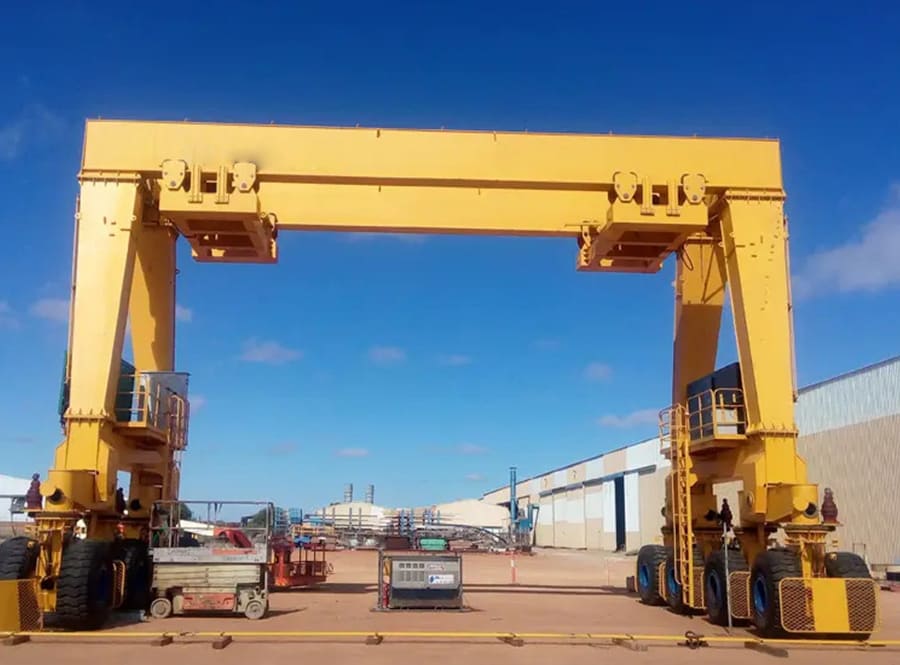
3. If an accident occurs on the equipment, the operator is strictly prohibited from leaving the site and is responsible for protecting the site. If anyone is injured, they must immediately call the on-site and off-site emergency hotline (86756120 inside the factory and 120 outside the factory) and notify the superiors of the unit immediately, the construction worker or the operation chief in the working area. If the operator leaves or destroys the site without authorization, the operator shall bear all consequences.
4. When operators and maintenance personnel add and replace lubricating oil, or when applying paint, if they accidentally spill oil or paint on the ground, they should immediately use rags and wood powder to absorb european standard automated rail mounted gantry crane suppliers, and then remove the used rags and wood powder. Collect them and place them in hazardous solid waste bins. Littering is strictly prohibited.
5. If a fire breaks out in the electric control box or sliding contact wire, the operator should immediately press the emergency stop button to cut off the power, and then use a fire extinguisher to extinguish the fire. If the fire cannot be extinguished, the operator should immediately call the factory fire alarm number 86756119 and notify the superior of the unit immediately. , the construction worker or the operation chief in the working area.
6. When there is a strong wind warning for an outdoor crane, the operation should be stopped immediately and returned to the anchoring position to seal the vehicle.
7. If the outdoor crane cannot return to the normal anchoring position for some reason when strong winds come, it should stop immediately and take measures to seal the crane on the spot and put away the iron wedges, rail clamps and wooden piers.








